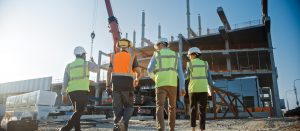Our hearts go out to the people of Texas, and people throughout the Midwest, as they struggle through blackouts during an extreme cold snap that has challenged electricity, heating, and water systems throughout the state. This event deprived over 4.5 million of Texans of power and at least 16 people died. This is a serious event that will require a serious and coordinated response to try to prevent extended loss of power in the future. Sammy Roth of the LA Times and Dr. Jesse Jenkins of Princeton University both have helpful overviews of this tragic event.
Unfortunately, the public discourse has been dominated by misinformation blaming the shift to renewable energy resources, especially wind, for blackouts, and incorrect claims that the move to decarbonize our energy systems will result in a much less reliable electricity system. That is simply not an accurate characterization.
Wind Energy Not a Factor in Blackouts
While a lot of folks are pointing the finger at wind energy for Texas’s woes, wind energy is simply not a major factor in the blackouts in Texas. As Professor Jenkins writes, “Two-fifths of the generating capacity of Texas’ thermal plants (a category that includes natural gas, coal and nuclear plants) has been offline since Sunday night, accounting for the bulk of supply shortfalls. Texans were counting on these plants to be there, and they failed.” The director of Texas’s Electricity Reliability Council (ERCOT) said that wind turbines falling offline because of ice were the least significant factor in the blackouts. We note that the Federal Energy Regulatory Commission (FERC) had warned Texas power operators after a cold snap in 2011 that it should invest in weatherizing its power plants to ensure that they could operate in cold temperatures.
Texas Energy System Not Built for Extreme Cold Snaps
Energy SystemExtreme cold snaps in Texas are rare and their energy system is not built around dealing with such major demands for electricity and gas to heat homes and buildings. But we know that climate change is driving more frequent extreme hot and cold temperatures. The Fourth National Climate Assessment forecasted this in 2018, noting: “Extreme weather includes high winds, thunderstorms, hurricanes, heat waves, intense cold periods, intense snow events and ice storms, and extreme rainfall. Such events can interrupt energy generation, damage energy resources and infrastructure, and interfere with fuel production and distribution systems, causing fuel and electricity shortages or price spikes. Many extreme weather impacts are expected to continue growing in frequency and severity over the coming century, affecting all elements of the Nation’s complex energy supply system and reinforcing the energy supply-and-use findings of prior National Climate Assessments.” We don’t know enough to know whether or not the recent polar vortex was caused by climate change, but we know that it is driving more extreme weather that is stressing our nation’s infrastructure and we need to prepare accordingly.
Impacts Hit Some Communities Unfairly
Blackouts are harmful events, as a steady supply of energy is essential to health and safety. But it’s clear that those living in low-income communities have seen the most impacts during the blackouts. As one Houston resident told the Houston Chronicle, “Historically, every year we are caught in this scenario, through no fault of our own. Communities of color are doing everything right. But we keep getting dunked on — every single time.” The blackouts in Texas demonstrate once against why we must prioritize investments in better energy and transportation infrastructure in communities of color and low-income communities.
Building a Better Electricity Grid
It is clear that the electricity grid and gas distribution systems of the 20th century are not up to all the challenges of today. A more flexible, distributed, and resilient electricity grid would allow us to integrate more zero-emissions resources, better protect our energy supply infrastructure from climate change and extreme weather conditions and use energy storage technologies and advanced IT systems to help reduce customer demand. We can also help by investing in energy efficiency and weatherization upgrades to reduce heating and cooling needs in our homes and businesses and moving faster to net-zero energy buildings. We will be monitoring President Biden’s push for a major energy infrastructure and climate bill, which may gain some momentum after the tragic events in Texas. Whatever the answer, we cannot simply ignore the need to decarbonize our energy systems, as climate change is making these types of extreme weather events the norm.






